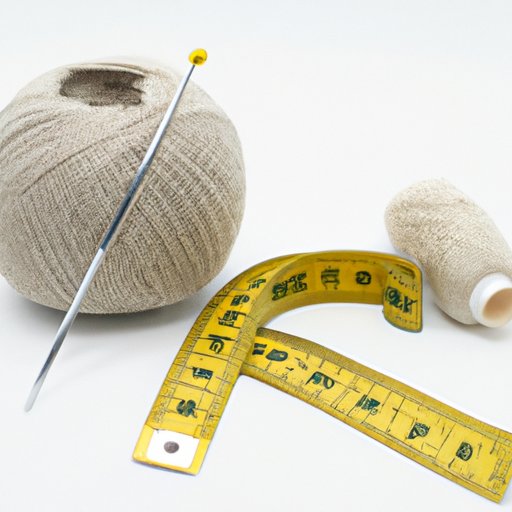
I. Introduction
DK weight yarn is a versatile and popular yarn weight that is perfect for a wide range of knitting projects. Whether you’re a seasoned knitter or a beginner, understanding DK weight yarn is essential to producing high-quality knitted items that meet your expectations. This article provides an in-depth guide to DK weight yarn, covering everything from the characteristics of the yarn to how to choose the best type of yarn for your project.
II. Understanding DK Weight Yarn: A Guide for Knitters
DK weight yarn is a medium-weight yarn that falls between sport and worsted weight yarn. It has a gauge of 21-24 stitches per 4 inches and is typically knit with size 5-7 needles. DK weight yarn is incredibly popular and widely used because of its versatility and ease of use. To determine if a yarn is DK weight, check the yarn label, which should provide information regarding its weight classification.
III. The Ultimate DK Yarn Guide: Everything You Need to Know
DK weight yarn can be made from a variety of fibers, including wool, cotton, silk, and blends. Each fiber has its unique characteristics that affect how the yarn and final knitted item look and feel. The texture and structure of DK weight yarn can vary significantly, giving knitters a range of options to choose from, including plies, tweeds, and variegated yarns. When selecting the best colors for your project, consider which colors complement one another and the overall mood of the item you’re making.
IV. From Fingering to Chunky: Why DK Weight Yarn is the Perfect Middle Ground
One of the main advantages of DK weight yarn is its versatility. It’s one of the few yarn weights that can be used for a wide range of knitting projects, including scarves, hats, and sweaters. Compared to other yarn weights such as fingering and worsted weight, DK weight yarn provides a perfect balance between the lightweight nature of fingering yarn and the heavier feel of worsted weight yarn.
V. Tips and Tricks for Knitting with DK Weight Yarn
Knitting with DK weight yarn comes with its set of unique challenges and considerations. To achieve accurate swatches, ensure you use a proper needle size and work with a yarn that has the same weight and texture as your final project. When selecting needles, opt for sharper and shorter tips that allow more access to each stitch. Some other useful tips include avoiding yarn splitting and keeping track of your stitches using stitch markers.
VI. The Different Types of DK Weight Yarn: Which One is Right for Your Project?
When choosing the best type of DK weight yarn for your project, you must consider factors such as durability, drape, and breathability. Wool and wool blends are perfect for colder months and are incredibly durable, while cotton and silk blends work well in warmer months. Blends offer the best of both worlds, combining the advantages of each fiber.
VII. DK Yarn 101: How to Choose, Substitute, and Work with It
When selecting the best DK weight yarn for your project, consider factors such as fiber content, gauge, and yardage. Be sure to measure gauge accurately and make any necessary adjustments to obtain the desired results. When substituting DK weight yarn in a pattern, you must ensure that both the gauge and yardage of the yarn match those of the original yarn, and finally, when working with DK weight yarn, it’s essential to store it properly and block finished projects to enhance their shape, size, and texture.
VIII. Conclusion
DK weight yarn is one of the most versatile yarn weights and perfect for a wide range of knitting projects. From selecting the best type of yarn to using proper knitting techniques, this ultimate guide provides everything knitters need to know when working with DK weight yarn. Whether you’re a beginner or an experienced knitter, experimenting with DK weight yarn and trying new techniques and projects is a great way to hone your knitting skills and discover your creativity.




